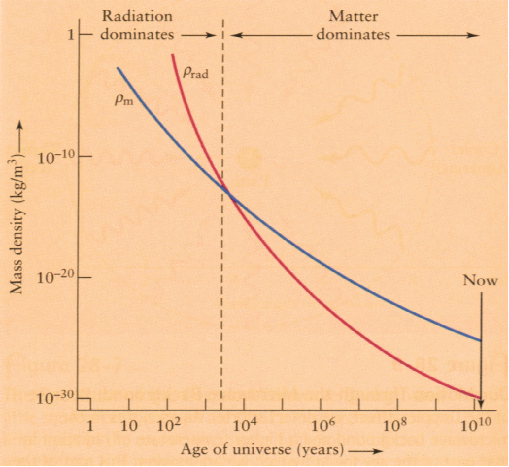The Radiation Era lasted from about three minutes to 300,000 years after the Big Bang, and is that period in the development of the Universe when it was opaque to radiation. During this period matter and radiation were essentially in equilibrium, as in the interior of stars. Photons are repeatedly absorbed and re - emitted. During the early part of the radiation era nucleosynthesis occurred, with light nuclei forming – hydrogen, helium, lithium, but the latter part is very unexciting – the Universe growing larger and cooling.
For the rest of the Radiation Era (a period of 300,000 years) the matter in the Universe remained fully ionized, continuing to expand. The entire universe was a plasma of freely moving protons, neutrons, light nuclei and electrons, just as one finds in stars today. Plasma, considered the fourth state of matter (after solid, liquid, and gas) is a state of charged ions (atomic nuclei) and electrons with photons scattering off them and re - ionized any atoms that had formed. There are no atoms as exist normally - i.e. electrons orbiting a nucleus, because the heat is so great that any electrons are automatically stripped away. At some point – around 300,000 years after the Big Bang - the energy density of radiation will fall below that of matter, and the temperature will cool so that radiation and matter are no longer in equilibrium.

The Universe is now transparent to radiation, and the matter dominated era has begun.
